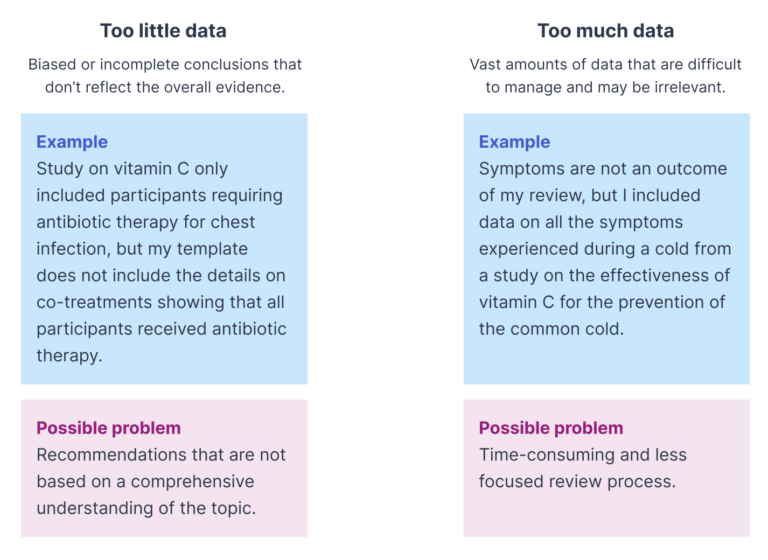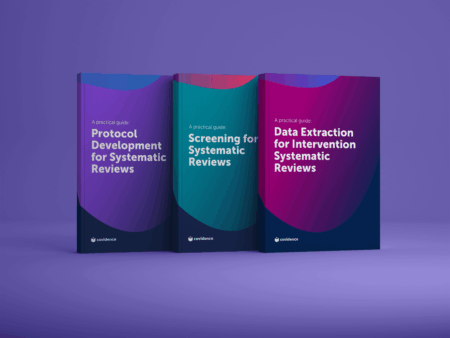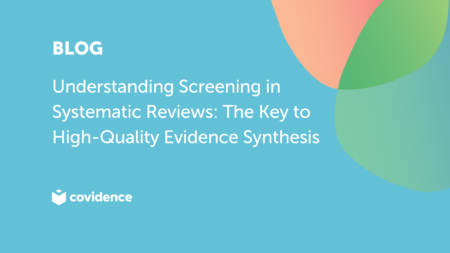Extract the Right Amount of Data
Welcome to tip 4 in our series on Data Extraction where we examine how to extract the right amount of data. Taken from ‘A practical guide: Data Extraction for Systematic Reviews’, this tip advocates for a delicate balance – extracting all pertinent information while avoiding the burden of unnecessary data that could hinder analysis. By mastering this balance, researchers can streamline their workflow, ensuring that their analyses are thorough without the constant need to refer back to the original sources. Join us as we explore the nuances of discerning between crucial and non-essential data to enhance the precision and efficiency of your systematic review.
Finding the balance
Extracting the right amount of data in a systematic review is crucial for several reasons. It is important to collect enough information to be able to complete the analysis without having to keep going back to original sources because you didn’t extract the data you need. You also don’t want to waste time by extracting data that is not useful to your review or not needed in the analysis or synthesis. If you have a protocol, you should follow it. You can always make changes to the protocol as long as these are documented and explained for transparency.

“Collecting too much information can lead to forms that are longer than original study reports, and can be very wasteful of time. Collection of too little information, or omission of key data, can lead to the need to return to study reports later in the review process.”
Why is it important to extract the right amount of data?
- Precise and robust conclusions: Focusing on the key information that is relevant to the research question or objective of the systematic review. This precision helps ensure that the findings and conclusions drawn from the review are accurate and directly related to the research question, without including irrelevant or extraneous data. This is important for researchers and policymakers who rely on systematic reviews to make informed decisions.
- Minimising bias (cherry-picking): Careful selection and extraction of data minimises the risk of introducing bias into the systematic review. If you extract too much data, including irrelevant information, it can lead to the incorporation of biased or low quality data that could distort the review’s findings. On the other hand, extracting too few data might result in an incomplete or skewed picture of the existing evidence. It’s important to get the balance right.
- Transparency and reproducibility: Researchers should provide detailed descriptions of their data extraction process, including how and what data were collected.
- Validity and reliability: Ensuring the right amount of data are extracted helps maintain the validity and reliability of the systematic review. The review’s findings and conclusions should be based on the best available evidence, and extracting an appropriate amount of data is essential for this purpose.
- Efficient use of resource: Strike the right balance. Extracting too much data can be time-consuming as well as resource-intensive, leading to inefficiency in the review process. Extracting too few data might necessitate additional searches or rework.
- Organisation: Systematic reviews aim to provide a structured and organised summary of the evidence. Extracting the right amount of data ensures that the review remains focused, well-organised, and easy to understand, which benefits both researchers and readers.
Summary
Extracting the right amount of data in a systematic review is essential to ensure the review’s accuracy, relevance, and quality. It minimises the risk of bias, promotes transparency, optimises resource utilisation and helps maintain the validity and reliability of review’s findings.
Download ‘A practical guide: Data Extraction for Intervention Systematic Reviews’ below.
Don’t forget to share this blog with friends or colleagues and on social media


